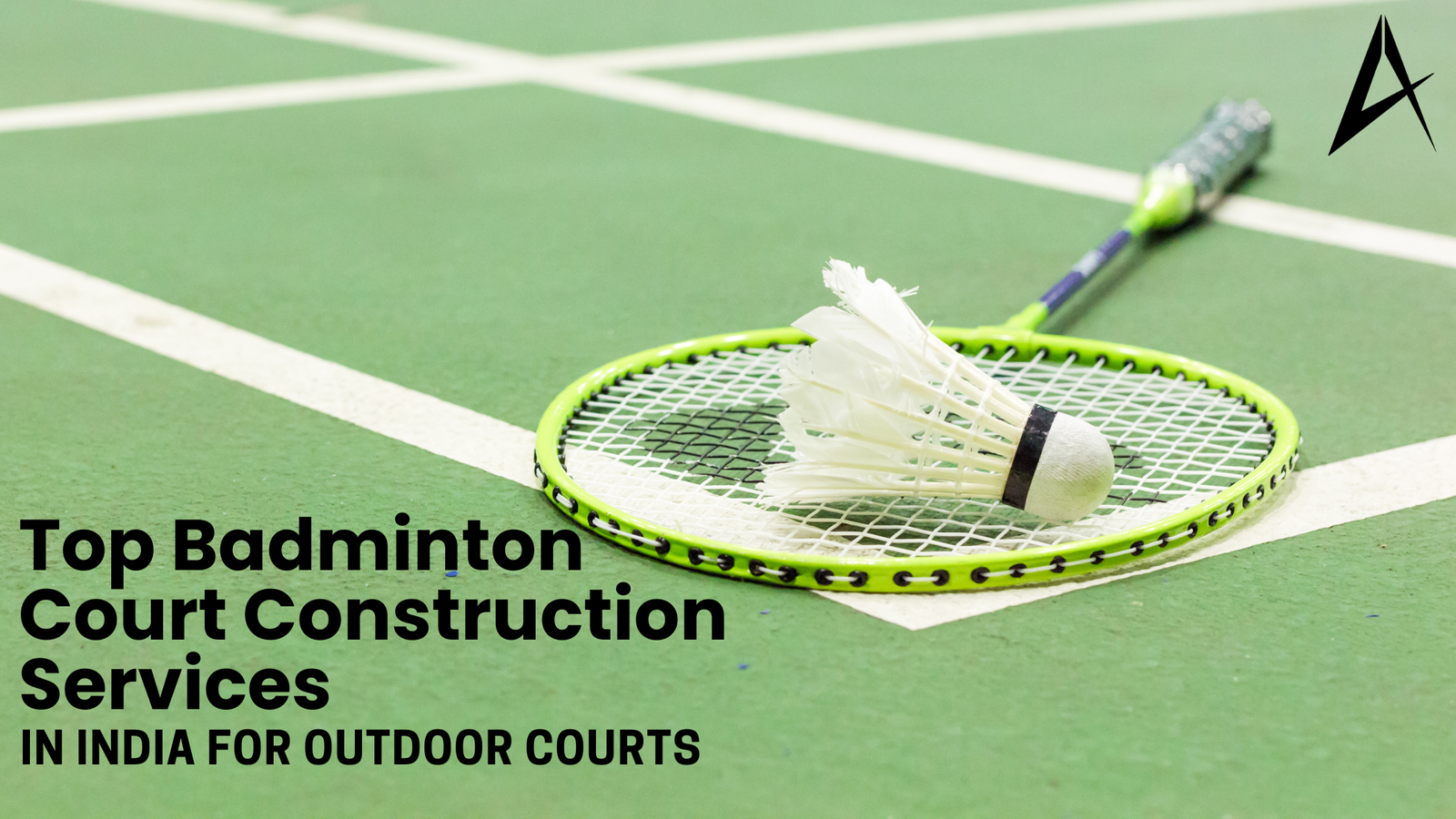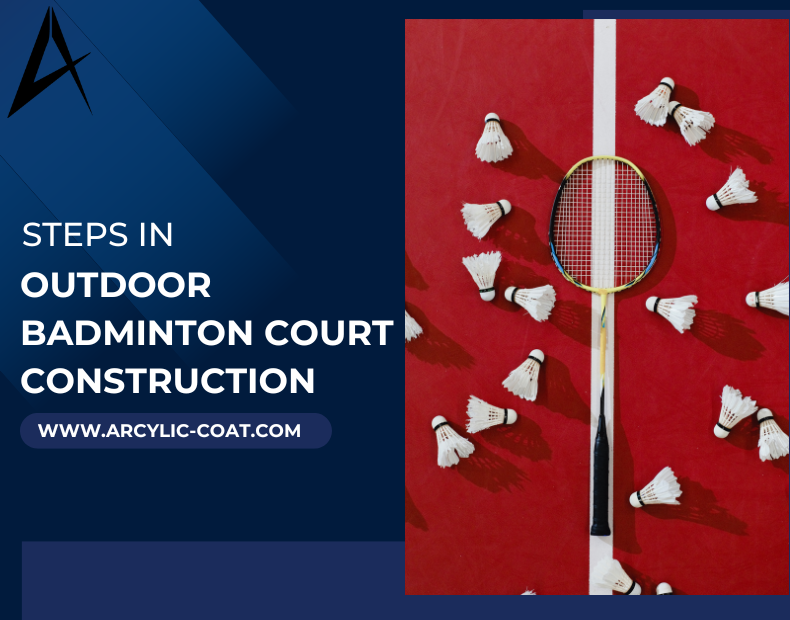
Badminton has moved out of indoor sports halls and is fast becoming an outdoor sport in India. From residential complexes to school playgrounds and public parks, the demand for outdoor badminton courts has seen a rise. It is because the sport is accessible, low on equipment and suitable for all age groups. With this growing interest, a well-constructed badminton court is a must.
This blog lists the best badminton court construction services in India for outdoor spaces, including the must-haves, surfaces, steps and trusted service providers that ensure quality and long-term value. AAL is one of the top choices for outdoor badminton court construction, known for its precision work and premium-grade synthetic coatings.
Why Outdoor Badminton Courts Are in Demand
- Use of Open Space: Outdoor courts use up the available space in schools, residential societies and public parks for physical activity.
- Cost-Effective: Outdoor badminton court construction is much cheaper than indoor courts, as there is no need for roofing or climate control systems.
- More Accessibility: These courts require minimal infrastructure and can be installed in many places, making the sport more accessible to the public.
- Low Maintenance: When constructed with synthetic acrylic outdoor courts are easy to clean and maintain even in extreme weather.
- Weather Resistance: High-quality coatings provide protection against UV rays, rain and dust for long-lasting performance.
- Community Use: Affordable and easy to use, outdoor badminton courts are a great option for schools, clubs, housing complexes and government recreation areas.
Key Features of a Quality Outdoor Badminton Court
- Weatherproof Surfaces: To keep the court dry from rain, sun and temperature fluctuations for year-round use and durability.
- Proper Drainage: A sloping concrete or cement base prevents water accumulation and surface damage during heavy rain.
- UV-Resistant & Anti-Skid Coatings: Protects the surface from fading due to sun exposure and provides grip for players during play.
- Standard Dimensions & Markings: Must follow Badminton World Federation (BWF) guidelines for recreational and professional use.
- Enhanced Safety and Longevity: All these features reduce wear and tear, maintenance needs and risk of player injuries.
- International Standards Compliance: Ensures the court meets standards for training academies, schools and sports facilities.
Without these features, the outdoor badminton court will damage fast and compromise performance and safety.
Types of Outdoor Badminton Court Surfaces
Outdoor badminton courts may be constructed on different surface materials having their advantages and disadvantages in terms of performance, durability, and cost.
1. Synthetic Acrylic Flooring
This is the favorite and most used surface for outdoor badminton courts. Synthetic acrylic flooring is weatherproof, UV resistant and very hard-wearing. It offers good surface grip for the safety of players and unvarying play. The multilayered system consists of a topcoat that is UV stable, cushion coats and a primer and is ideal for Indian weather.
2. Concrete Base with Acrylic Coating
A cost-effective alternative that merges the durability of concrete with the performance advantages of an acrylic topcoat. Calls for precise slope and drainage upon construction and is ideally suited for schools, housing estates and playgrounds.
3. PU Coating (Less Popular Outdoors)
While generally employed indoors, PU coated surfaces are also suitable for covered outdoor environments. They provide cushioned comfort and anti-slip features but are less resistant to UV light.
Comparison Summary
- Durability: Acrylic > PU > Plain Concrete
- Cost-Effectiveness: Concrete with acrylic is the cheapest.
- Maintenance: Acrylic surfaces are easy to clean and durable
Steps in Outdoor Badminton Court Construction
Professional badminton court builders follow a strict step-by-step process to ensure every court meets international standards and safety.
- Site Assessment and Planning
- Inspect the site and measure the space and sunlight.
- Design the court layout with the correct orientation for play.
- Base
- Build a concrete or cement base with a 1–2% slope for drainage.
- Compaction, surface curing and level accuracy.
- Surface Layers
- Primer coats to bond materials, cushion coats for comfort.
- UV-resistant, anti-skid topcoat for traction and weather resistance.
- Final Coating and Line Marking
- Permanent line marking with BWF measurements.
- Weatherproof paint for outdoor use.
This process will give you long-lasting performance and safe play for all users.

Cost of Outdoor Badminton Court Construction
The price of constructing outdoor badminton court flooring is based on many factors.
- Surface Material: Flooring type—acrylic, PU or concrete—is important.
- Labor and Installation: Qualified labor and professional installation is preferable at a higher cost.
- Location and Accessibility: Far or inaccessible locations might involve extra transport and logistics expenses.
- Optional Add-ons: Lighting, fencing and seating are added expenses to the overall price.
Estimated Cost Breakdown:
- Synthetic Acrylic Surface: ₹3.5 – ₹5.5 lakhs
- Concrete with Acrylic Coating: ₹2.5 – ₹4.5 lakhs
- PU-Coated Surface: ₹6 – ₹9 lakhs (used less frequently outdoors)
Use certified material and engage an experienced badminton court contractor for long-term performance. Proper construction saves maintenance costs and provides safer and more enjoyable play.
Maintenance Tips for Outdoor Badminton Courts
Keeping an outdoor badminton court in good condition is key to playability, safety and surface longevity. Without proper maintenance, even the best-built courts can deteriorate quickly with sun, rain and heavy usage.
- Regular Cleaning: Sweep regularly and pressure wash occasionally to prevent dirt, leaves and debris from building up and affecting grip and appearance.
- Recoating: Every 4-6 years, apply a new layer of anti-skid and UV resistant topcoat to restore surface color, traction and weather resistance.
- Surface Inspections: Check for signs of wear, cracks, peeling or color fading. Fix issues early to avoid costly repairs.
- Professional Support: Work with professional maintenance teams for scheduled servicing, surface treatment and minor repairs.
Maintenance is not only good for the life of the court but also player safety and long-term repair costs—so it’s a no-brainer for any facility owner.
Why Choose a Professional Construction Service
Working with a professional badminton court builder means a court that will last, perform and meet standards. Experts bring the technical know-how and precision to get every detail right—from dimensions to slope and surface layering.
- Precision Construction: Professionals get the dimensions right, the base slope right and the material application right—all important for consistent play.
- BWF Compliance: Following BWF guidelines means the court meets international specifications so it’s suitable for training or competition.
- Safety & Comfort: Anti-skid and shock-absorbing surfaces reduce the risk of injury and give a better playing experience.
- Cost-Effective: High-quality materials and expert execution mean less maintenance in the long run and better value for money.
Choosing the right badminton court contractor means fewer mistakes, longer performance and more it’s a smart investment for schools, clubs and residential projects.
Conclusion
Outdoor badminton courts are a practical and cost-effective way to promote fitness and recreation in schools, residential complexes and community spaces. With the increasing demand for safe, accessible and durable sports infrastructure, professional outdoor badminton court construction is a must. A well-built court will enhance gameplay, reduce maintenance and give long-term value.
Choosing an experienced and reliable badminton court construction partner like AAL will give you quality results. With expertise in synthetic acrylic systems, weather-resistant coatings and precision installation, AAL delivers courts that meet performance and aesthetic expectations.
Whether you are building a court for a school, society or sports academy, investing in professional services will give you long-term satisfaction and safety.
Frequently Asked Questions
A standard badminton court is 13.4 meters long and 6.1 meters wide for doubles, and 5.18 meters wide for singles play.
Depending on surface material and customization, the cost ranges between ₹2.5 lakhs and ₹5.5 lakhs for synthetic acrylic courts.
A concrete or cement base with a 1–2% slope is ideal for outdoor courts to support drainage and long-term stability.
For public or large institutional projects, local municipal approvals may be required. Private residential courts usually don’t need permits.
PU is generally used for indoor courts. For outdoor setups, synthetic acrylic is preferred due to better UV and weather resistance.
